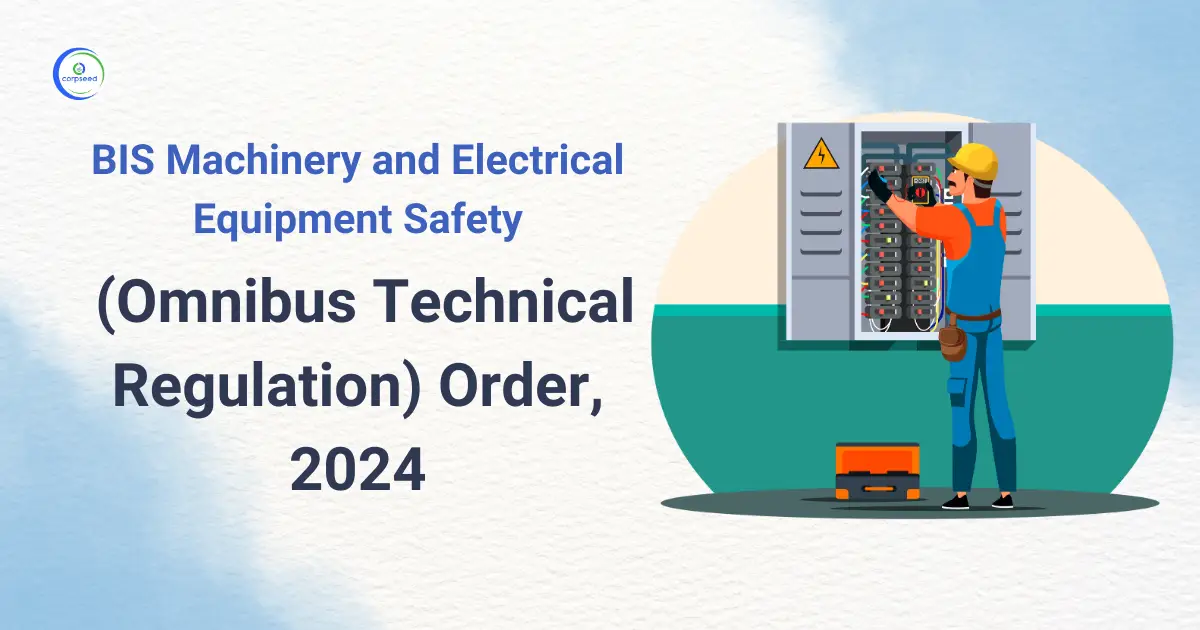Introduction: Bureau of Indian Standards (BIS)
The BIS Act of 2016 was the parent legislation that introduced BIS a standard National Organization of India in order to ensure the smooth progression of products and its standardization, marks, and quality as well as any issues related to those activities. Through standardization, certification, and testing, BIS has been able to provide traceability and tangibility benefits to the national economy in several ways, including by offering safe, high-quality products, lowering consumer health risks, encouraging exports, and promoting imports as a substitute.
Table of Contents
- Introduction: Bureau of Indian Standards (BIS)
- Why Do Fire Doors Need To Be BIS Certified?
- How Is The Quality Of A Fire Door Identified By The BIS?
- What Are The Different Types Of Fire Doors?
- How Are Fire Doors Tested?
- What Are The Conditions For The Failure Of A Door?
- General Conditions for a Fire Door
- What Are The Documents Required For A Fire Door Clearance?
--------------Blog Contact Form-------------
The BIS standard outlines the procedures for fire resistance testing as well as the performance requirements for fire check doors and shutters that are designed to stop the passage of fire and/or gaseous combustion products when closed. The date of establishment and date of withdrawal/cancellation for Fire Doors and Door Sets Indian Standard under the Bureau of Indian Standards Rules, 2018 were released by the BIS on May 20, 2021. In an event on 26th December 2022, the Government issued a notification that announced the Grant of All India First Licence for Fire Doors and Door sets.
Why Do Fire Doors Need To Be BIS Certified?
The ability to limit the spread of fire internally and outside must be considered as one of the fire safety requirements when planning and developing industrial and non-industrial buildings. If the corresponding floor areas are constrained and divided into smaller pieces, each section being divided by perfectly separating walls and apertures therein fitted with fire-check doors, the spread of fire can be reduced. The way fire-check doors are built and the materials that are used in their design must be such that the doors can effectively stop the spread of fire. As much as is practical, two doors should have the same fire protection as a wall. This standard was developed to provide sufficient guidance to both the producer and the consumer regarding the materials and construction that should be utilized to create fire-check doors that can offer the required fire protection. The construction and evaluation of doors is a very significant feature in order to achieve the proper level of fire protection, so it is strongly advised that such fire check doors be constructed rigorously in compliance with the specifications put out by the BIS.
How Is The Quality Of A Fire Door Identified By The BIS?
Every fire door manufacturer is required to obtain a BIS Certificate and enable their product with its mark. The mark at the end shall signify that a fire door has qualified all necessary tests and is safe to use. For fire doors, a test is conducted at a specialized testing laboratory. The test provides for the determination of the fire rating of the fire door on the basis of the length of time the fire door resisted the passage of fire and smoke at ambient temperature before the first development of through openings or flaming and transmission of heat on the unexposed surface.
Read Our Blog: BIS Product Certification
What Are The Different Types Of Fire Doors?
Fire doors are built keeping in place the following specifications-
- Single Fire: Check Door - One door shutter constructed for fitting on one side of an opening.
- Double Fire: Check Door -Two single fire-check door shutters for fitting one on each side of an opening.
- Fire Sliding doors
Some of the materials used in making fire doors are-
- Galvanized Steel Doors
- Steel plate doors
- Metal covered doors
- Rolling steel shutters
- Timber- Teak or yellow pine wood that has been properly dried and seasoned must be used for the timber boards in the building of metal-covered doors.
- Mild Steel Plates
- Gypsum
How Are Fire Doors Tested?
A fire door is tested in a Government certified laboratory. Inside the laboratory, the product is made to go through several sustainability tests. If the door design has been properly tested, shown to be capable of achieving the required level of fire resistance performance in standardized test conditions, and is correctly specified, fire-resistant doors are essential to life and building safety and can significantly reduce the risk of flame and smoke spread in a fire.
Fire Doors are tested on the following criteria:-
- Apparatus
- Furnace: It must be able to submit a full-size specimen either by itself or in conjunction with other vertical structural elements that have been certified as fire-resistant and have at least the same level of fire resistance as the specimen that will be evaluated. Additionally, the furnace needs to be able to reproduce accurate pressure and heating conditions.
- Thermocouples: The fire door assembly's exposed surface temperatures and the interior furnace temperatures must be measured using appropriate thermocouples.
- Pressure Measuring Equipment: The overall pressure must be measured and recorded for the horizontal specimen starting from the bottom and at a position approximately three-quarters of the specimen's height.
- Standard heating conditions
- Temperature Rise: The furnace's temperature rise must be managed so that it fluctuates over time in a controlled manner.
- Measurement of Furnace Temperature: The furnace temperature is taken to be an approximation of its average temperature based on the temperatures that thermocouples placed inside the furnace recorded. Test specimens' surfaces must be at a specified temperature and use thermocouples with a wire diameter of no greater than 0.7 mm to measure insulated doors.
- Tolerance: Until a value of more than 100 Degrees Celsius is achieved at any one spot, the temperature reading must be taken at intervals of no more than 15 minutes. Depending on how quickly the temperature is rising, the readings should be collected at intervals of at least five minutes.
- Pressure Conditions: For the horizontal specimen, the overall pressure must be recorded and monitored at a place that is 100 mm from the specimen's underside and at a point about three-quarters of the specimen's height.
- Testing Conditions: The testing apparatus and test sample assembly must be shielded from unusual wind or weather conditions. At the start of the test, the ambient temperature must be between 20°C and 40°C. Metal doors don't need to be conditioned because they are full metal.
- Insulation: The unexposed face of the specimen's average temperature must not rise more than 140°C above the starting temperature. No location on this face shall experience a maximum temperature that is higher than 220°C or by more than an 18°C difference from the beginning temperature.
- Stability: The test must continue even after the loss of integrity or insulation failure has occurred in order to ascertain if the specimen is stable or collapsed. In this situation, it is important to record the moment the door collapses, through openings form or the locking or latching mechanism fails.
- Fire Performance: A fire door's performance must be expressed in terms of the amount of time that has passed between the start of heating and the time of failure. The fire rating of a fire door is typically indicated as a fire rating of 30, 60, 120, 180, and 240 minutes.
India's First ISO/IEC 17025 (NABL and BIS) Accredited Fire Door Testing Laboratory is the Gujarat Test House (GTH).
What Are The Conditions For The Failure Of A Door?
A fully insulated door set or shutter assembly's fire resistance must be assessed in relation to integrity and insulation. The following criteria must be met in order for integrity to fail:
- During the test, the cotton pad provisions apply;
- During the test, the 6 mm gap gauge provisions apply to any other gap rather than at the skill level;
- During the test, the 25 mm gap gauge provisions apply to any gap;
- During the test, the requirements concerning sustained flaming apply.
The fire resistance of an uninsulated door set or shutter assembly shall be determined with respect to integrity. The criteria for failure shall be as follows:
- Any gap that is not at sill level throughout the test is subject to the 6 mm gap gauge regulations
- Any gap is subject to the 25 mm gap gauge rules
- Any sustained flaming requirements are applicable.
General Conditions for a Fire Door
- There are no visible cracks or holes in the door or the frame's surfaces. They must seal completely.
- If equipped, the glazing, vision light frames, and glazing beads are all present and firmly fastened.
- Check action door closers must be installed on the door.
- Every enclosed stairway in a structure must have a self-closing door that is one hour-fire-resistant.
- The non-combustible threshold is secured, aligned, and in good functioning condition with no obvious evidence of damage, as well as the door, frame, hinges, and hardware.
- Nothing is broken or missing.
- Wood doors must comply with the requirements of Sections 4.8.4 (the clearance under the bottom of the door shall be a maximum of 3/4") and 6.3.1 (top & edges 1/8") regarding door clearances at the door edge of the door frame. Metal door with up to 3/16" edges and a top
- The self-closing mechanism is functional; that is, when the active door is opened all the way, it closes completely.
- The inactive leaf closes before the active leaf if a coordinator is deployed.
- When the door is closed, latching hardware opens and closes the door.
- No auxiliary hardware is installed on the door or frame that might interfere with or prevent operation.
- The door assembly has not undergone any field alterations that render the label invalid.
- When necessary, edge seals and gasketing are checked for presence and integrity.
- Before leaving the construction site, all doors must receive one coat of red oxide, red lead, or graphite paint and two coats of oil paint right away.
- Except where the buyer specifically requests otherwise, all bolt straps or clips, sockets, latches, catches, hinges, pivots, and other fittings must be bolted through the door and/or welded or riveted to the frame.
- Cast iron shall not be used for any parts or fittings of doors and no lead or wood shall be used in fixing.
- Every fire-check door and shutter shall have a metal plate attached giving the manufacturer’s name or trademark and the date of manufacture.
What Are The Documents Required For A Fire Door Clearance?
- Name and location proof of the factory and office
- Laboratory test report stating the following-
- Name of manufacturer
- A description of the assembly including fixing arrangements of the fire door including drawing, exact sizes, and components like thickness and the locations of fire door test assembly. The clearance and gaps between doors and frames shall be fully recorded.
- Rating of the fire door mentioning stability and integrity rating;
- Furnace time/pressure chart and temperature curves actually attained during heating conditions;
- Time/temperature results
- Any other information about the performance of the door/shutter specimen.
- Documents proving the manufacturing unit's establishment, such as a memorandum of association, and an incorporation certificate.
- A registration certificate for MSME/SSI, if applicable
- All manufacturing processes are included in the manufacturing process flow (from raw material to finished product stage)
- list of manufacturing equipment and information about the machinery
- Information about outsourcing a manufacturing activity, if any
- A comprehensive list of testing locations and testing equipment
- Copies of the testing equipment's current calibration certifications
- If applicable, a third-party laboratory test report in accordance with Indian Standards
- The layout of the factory's grounds and a map of its location.
This portion of the site is for informational purposes only. The content is not legal advice. The statements and opinions are the expression of author, not corpseed, and have not been evaluated by corpseed for accuracy, completeness, or changes in the law.
BOOK A FREE CONSULTATION
Get help from an experienced legal adviser. Schedule your consultation at a time that works for you and it's absolutely FREE.







.webp)

